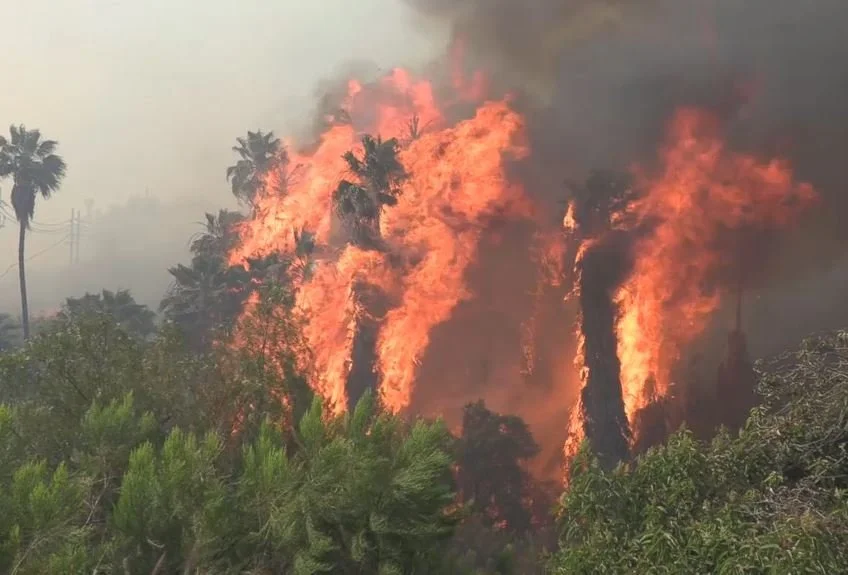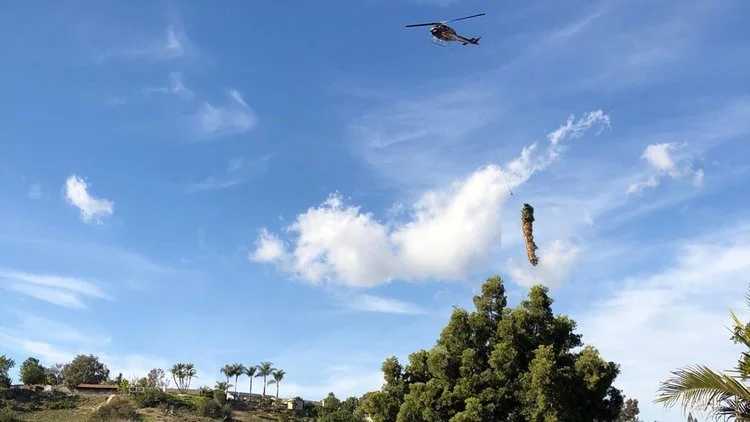wildfire prevention
Fire is a natural part of Southern California’s ecosystem, and as human development has increased, so has our proximity to fire. With increasing droughts due to human-induced climate change, fire risk will continue to threaten San Diego residents. Fortunately, there are measures we can take to protect our homes and families.
At San Diego Canyonlands, we work to protect our environment and community by carrying out restoration projects throughout San Diego county. More details about our projects can be found by scrolling below.
Resources on home hardening and fire-safe landscaping can be found in our wildfire resiliency resource package.
wildfire resiliency projects
Navajo Canyon is within a City of San Diego Multiple Species Conservation Plan Open Space Park and consists of 141 acres owned by the City. San Diego Canyonlands, in partnership with the City of San Diego and the San Diego River Conservancy, are restoring and enhancing 7.2 acres of wetland/riparian and upland habitats within the canyon.
This will be accomplished in several steps, beginning with the removal of an estimated 557 mature, invasive, and non-native Mexican fan palms (Washingtonia robusta), and 43 similarly invasive Canary Island date palms (Phoenix canariensis) by helicopter and trucked off site. Once these high-fire risk and ecologically harmful species have been removed, restoration areas will be designated and native revegetation will be implemented. In wetland/riparian areas, where vegetated coverage is reduced significantly due to removal of non-native species, restoration will include insertion of mulefat (Baccharis salicifolia) cuttings, and willow (Salix spp.) cuttings.
Ruffin Canyon: San Diego Canyonlands undertook a similar Palm Removal Project in Ruffin Canyon. Our team, alongside San Diego River Conservancy, The City of San Diego Senior Rangers, and West Coast Arborists successfully felled and removed 600 non-native, invasive palms via helicopter in December 2022.
The extent of Mexican fan palm and Canary Island palm presence in the canyon had resulted in a similar level of ecological devastation, with associated water quality and storm water flow issues, as well as a heavily increased fire risk to the surrounding urban area.
In riparian areas where palms were removed, we carefully selected prime habitat restoration sites where native plants were introduced. After just one year the plants have taken nicely and the habitat has begun its process of conversion back to a thriving native riparian ecosystem. Throughout the restoration sites, we planted approximately 700 native cuttings/stakes and 150 native, potted plants, including:
Black Willow (Salix gooddingii), Elderberry (Sambucus nigra ssp. cerulea), Cottonwood (Populus fremontii), Mulefat (Baccharis salicifolia), Yerba mansa (Anemopsis californica), Mugwort (Artemisia douglasiana), San Diego sagewort (Artemisia palmeri), San Diego sedge (Carex spissa), California fuchsia (Epilobium canum), San Diego marsh elder (Iva hayesiana), Hooker's evening primrose (Oenothera elata), Salt marsh fleabane (Pluchea odorata), Arrowweed (Pluchea sericea), and California rose (Rosa california).
The Arroyo Preserve is a private reserve owned by the Rancho Santa Fe association. Recent wildfires in the canyon have spurred homeowners to act, and in conjunction with the San Dieguito River Valley Conservancy, restoration work began in November 2024. West Coast Arborists and California Conservation Corps aided us in removing x amount of river red gum eucalyptus trees (Eucalyptus camaldulensis), as well as similarly invasive Canary Island date palm (Phoenix canariensis) and giant reed (arundo donax). Eucalytptus pose high fire risks in Southern California, due to their wide canopy which easily allows embers to travel, and the flammable oils in their leaves.






